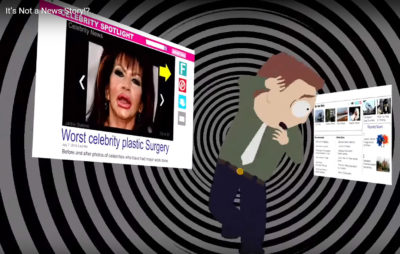
The art of religion news in the broadband, multimedia, & social age, 2006-2009
The web revived, in the form of TED Talks, the national importance of the Chautauqua-type lectures that assumed such a large role in spreading culture in the 19th Century. Drawing upon Silicon Valley’s penchant for short artistic power point presentations, TED Talks of 18 minutes each became a cultural movement after 2006 when it started to promote its smart talk bites on the Web.
The leap to the Web took place under Chris Anderson, a son of missionaries, who took over leadership in 2006. He mixed in a missionary earnestness with talks on the climate, the plight of child soldiers in Africa and the like. Anderson reconfigured TED’s slogan to “ideas worth spreading.” The shortness of the talks reminds one of P.G. Wodehouse’s funny story on a betting game based upon which local vicar had the shortest sermons. “What, ho! It’s TED Talks!” The Talks also resembled blog posts in that the speakers perform for free in the hopes of that it would increase their status, network and social impact. Listeners were entertained while enhancing their personal smart glam IQ. The web was also becoming more conversational and social.
Short got shorter in the same year with the introduction of Twitter. The first tweet, “just setting up my twttr” [the original name] was sent March 21st by co-founder and recent NYU undergraduate Jack Dorsey. One could listen to an eighteen minute TED Talk and reduce it down to a couple of tweets of 120 characters or less. Critics of twitter note taking and headlining cited Dorsey’s description to the Los Angeles Times of a tweet as “a short burst of inconsequential information” and “chirps from birds.”
In the same year Jonah Peretti, Ken Lehrer, formerly of the Huffington Post, and John S. Johnson III, launched another news shortener, BuzzFeed, with a strategy of crafting stringently condensed content in a way that it goes viral. After a learning curve, their listicles, memes, and photo lists fueled its ascent to the most viewed entertainment and news provider. The sheen of smartness was often provided by the use of data journalism done by other news outlets, the government or academia.
Around 2006, discussions about a new way of inserting data analysis into news reporting gained momentum as collections of data and the tools of analysis became more widely available on the web. The advocates claimed that “data-driven journalism” was different from previous data-assisted journalism (which goes back at least to 1821’s Guardian publishing a leaked report on English schools and their costs), because it advocates that the data collecting and analysis be part of the story gathering process from the beginning. In fact the data analysis may drive the story, rather than the other way around. Previous use of data in news stories generally added the data like photos after the story was already in process.
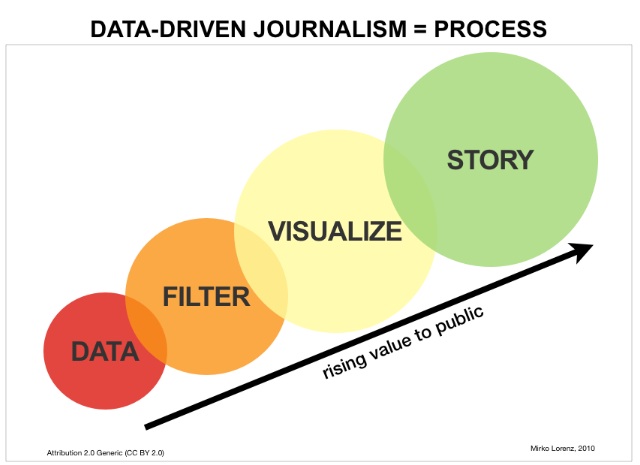
“Data driven journalism process” by Mirkolorenz – Own work. Licensed under CC BY-SA 3.0 via Commons.
Adrian Holovatz, one of the promoters of data-driven journalism, summed up the difference in 2006 with the mantra, “Newspapers need to stop the story-centric worldview.” He meant that the data should come first and be presented in such a way that the reader could themselves explore the data and draw their own conclusions. In 2006 he launched the website EveryBlock.com to show what he meant (the website was sold to MSNBC.com in 2009). The site gathered reports, photos and data from all over the web about each block in a neighborhood.
Perhaps, the most important game-changer for news media and its design format came with the loss of that most homely looking but highly read section, the want-ads. In a stunning collapse print newspapers quickly lost up to 40% of their revenue after the online want-ad site Craigslist was launched.
In 2007 Google also released its Street View, which was integrated into Google Maps. Eventually, news media could generate a photo of almost any place in the United States quickly without waiting for a photographer. New York City was one of the first cities mapped.
That year, Beliefnet.com won the American Society of Magazine Editors 2007 award for “Online General Excellence.” The editors praised Beliefnet.com for “its ability to unite a diverse audience under one digital roof.” It was a curtain call for the financially shaky Beliefnet, which laid off its staff and eventually sold to become a Christian spirituality site. However, its model inspired other initiatives like the Washington Post’s “On Faith” blog and USA Today‘s “Faith and Reason” blog. Cathy Grossman’s USA Today “Faith and Reason” became one of the paper’s most popular blogs. Patheos launched in 2008 with a combination of attributes from Beliefnet and the Huffington Post.
In 2008 BuzzFeed’s “Disaster Girl” became its first runaway meme (a photo to which you add your own witty words). It also introduced “native advertising.” The idea was to insert advertising that resembled news stories. This narrative public relations attracted investors who foresaw large revenue potential in the web after all. The downside was that some viewers felt inundated with low calorie news stories and ad insertions. However, many more viewers were flocking around BuzzFeed’s offerings.
Religious scholars launched the online Religious Dispatches in 2008 as a counter-voice to the religious right. Nominated for four Webby awards, it evolved from an academic project into an online magazine. As the editors later wrote, the online magazine promised public religions that they would be “fair game in the rough and tumble of public debate.”
In 2009 the first Pulitzer Prize to an independent online news site was given to ProPublica’s Sheri Fink for her article “Deadly Choices” on how Memorial Hospital in New Orleans handled its poorer patients during Hurricane Katrina. The origins of this investigative reporting lay partly in the results of religion reporting. Tony Carnes’ photos of dead bodies lying before the altar in the Memorial Hospital chapel and elsewhere sparked high attention when the photo was published large on the front page of the New York Times with an accompanying article.
After several editors discounted that the catastrophe could have any important religious angle, Carnes persuaded one to send him with the simple goal of covering the first Christian worship services in New Orleans after the hurricane, if he could find any. The reporter expanded the goal to encompass how religious people all along the Gulf Coast responded to the hurricane. Hearing from New Orleans police chaplain Hy McEnery that there was a chapel in Memorial Hospital that might have a congregation of dead bodies in it, Carnes hitched a ride on a boat to the hospital. He discovered almost two dozen bodies, some laid carefully before the altar, some hung over the backs of chairs or in the hallways, or left on hospital gurneys. His singular focus on religion reporting had landed him into a mystery and possible scandal over the way these people had died. This process of religion reporting leading to other big stories in all aspects of life is not surprising when you consider how pervasive religion is in society. (And the reporter satisfied his editor’s demand for a live audience by covering McEnery’s small Sunday service for rescue workers.)
Data-driven journalism also received an endorsement of sorts when the fact-checker site PolitiFact.com, founded and operated by the print newspaper Tampa Bay Times and the Congressional Quarterly, won a Pulitzer in 2009. A Pulitzer was also given to reporters for stories in print and online in the East Valley Tribune of Phoenix, Arizona. The Guardian in London launched its pioneering Datalog.
Kickstarter’s arrival at about the same time would eventually make it possible for independent online news media to crowd source funding.
In 2009 Paul Raushenbush, a pastor and the Associate Dean of Religious Life and the Chapel at Princeton University, emailed Arianna Huffington with a proposal to start a religious section in the Huffington Post. The proposal was quickly accepted. Raushenbush brought with him some of the values of the social gospel movement, which his father had helped to found.

Paul Raushenbush standing in the religion section of the Huffington Post news room in Manhattan. Photo: Tony Carnes/A Journey through NYC religions
++++++++++++++++++++++++++++++

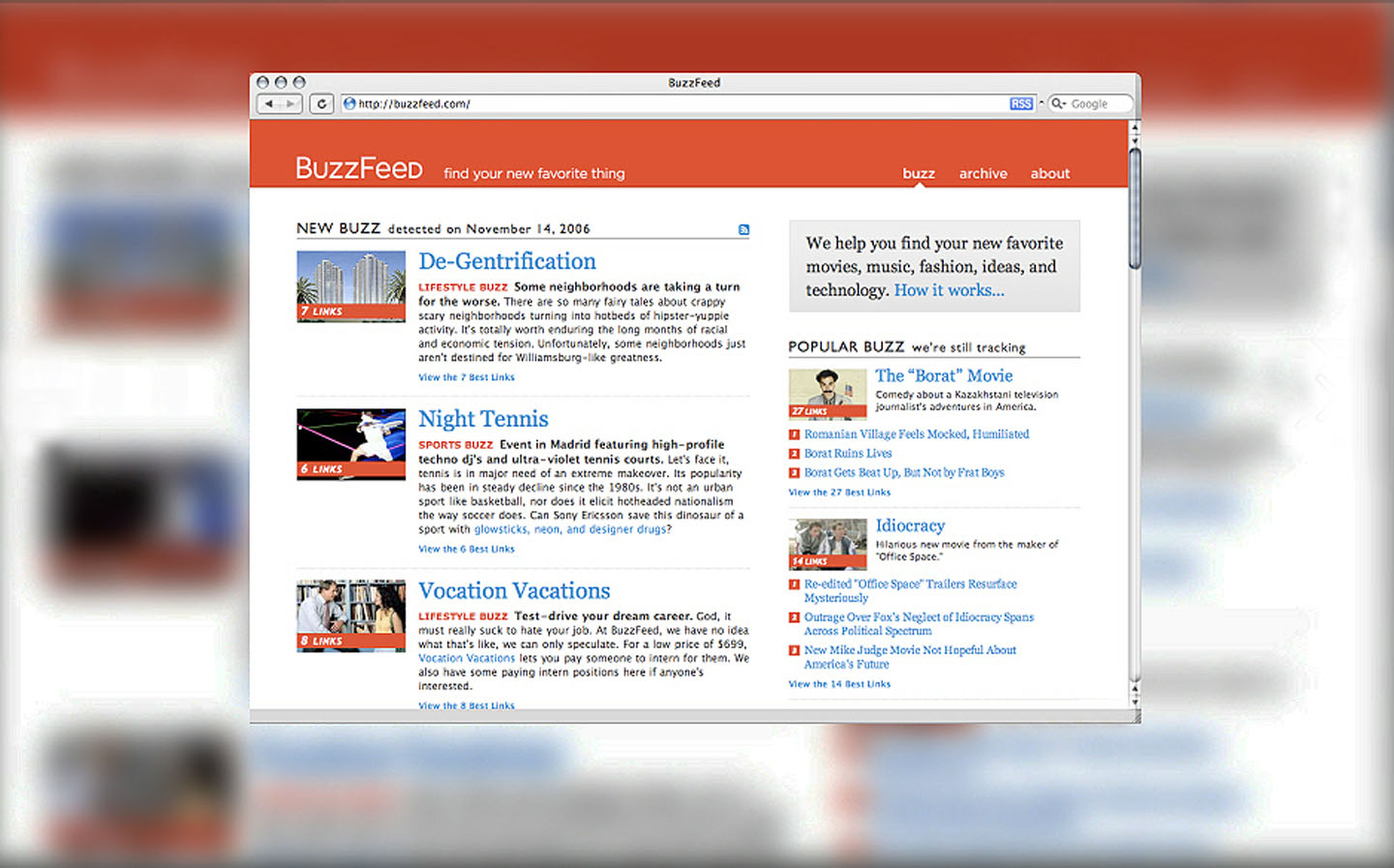
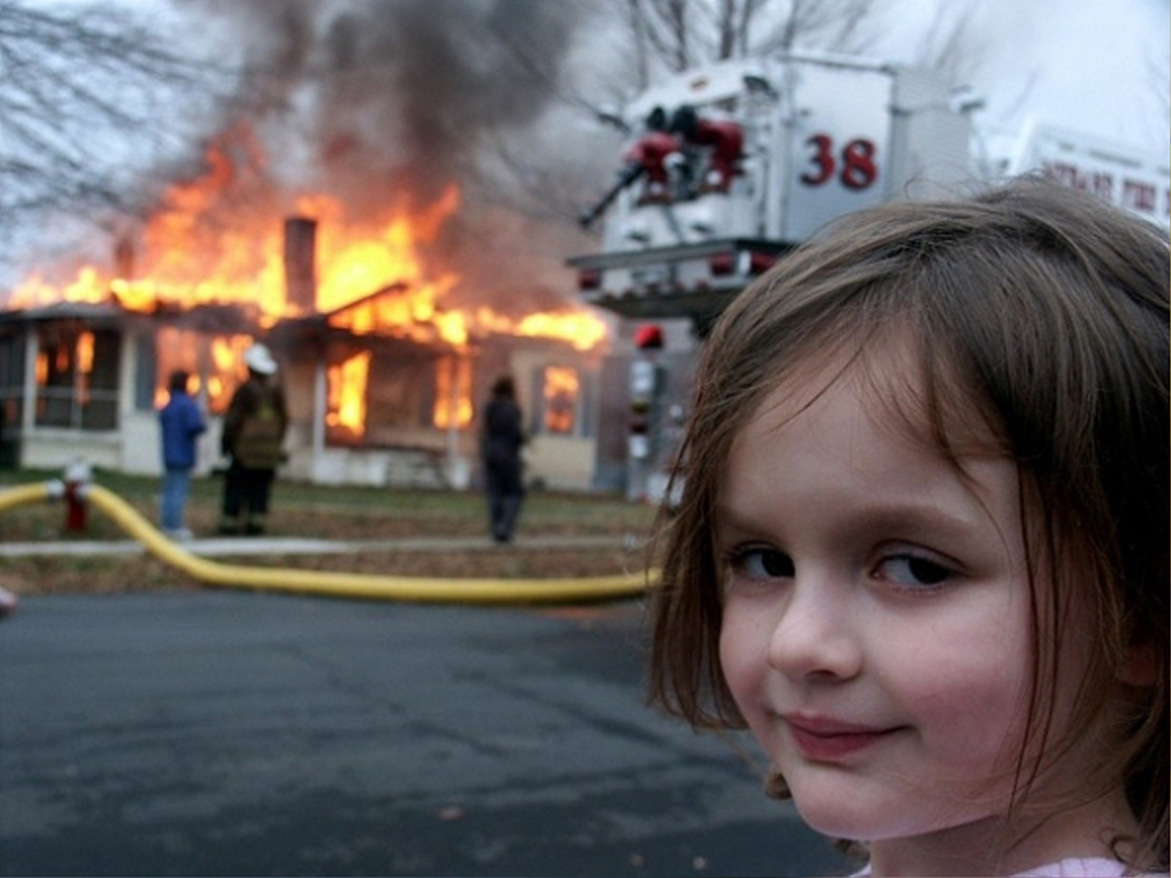
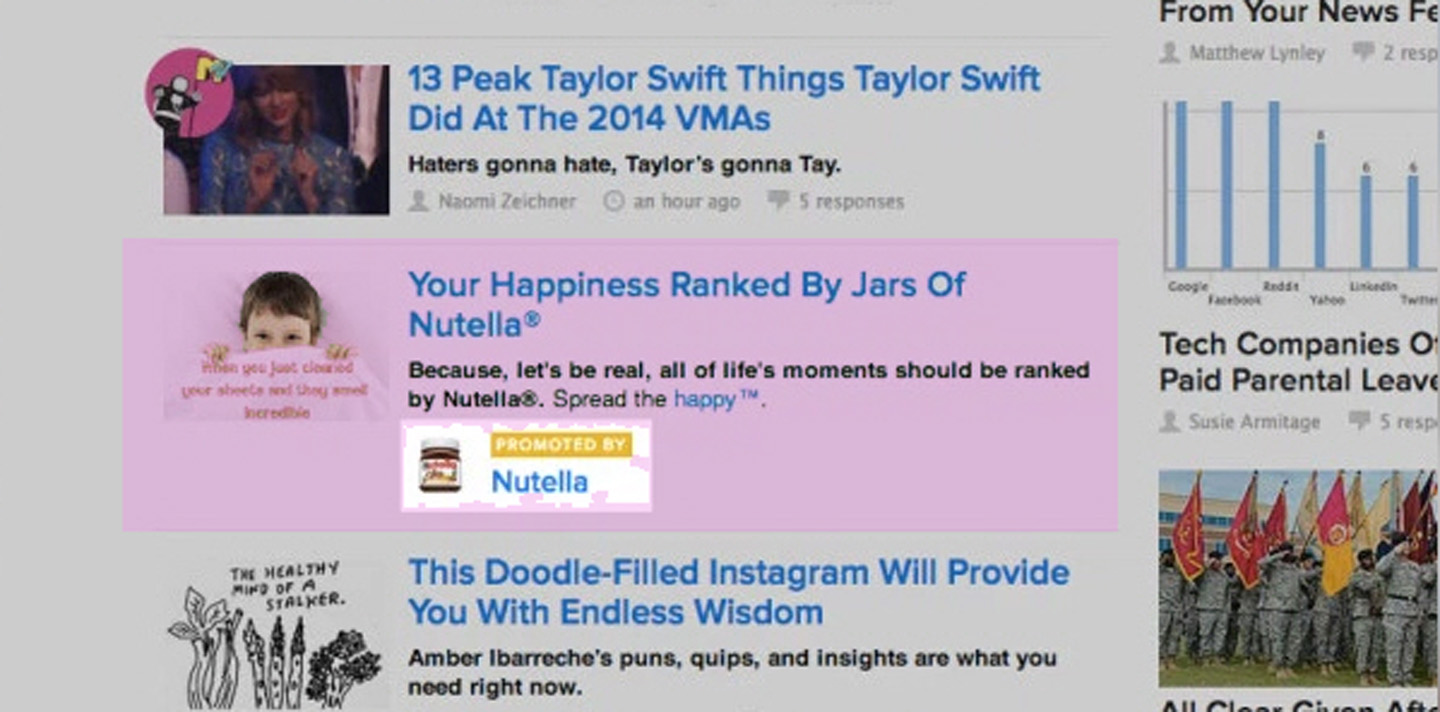
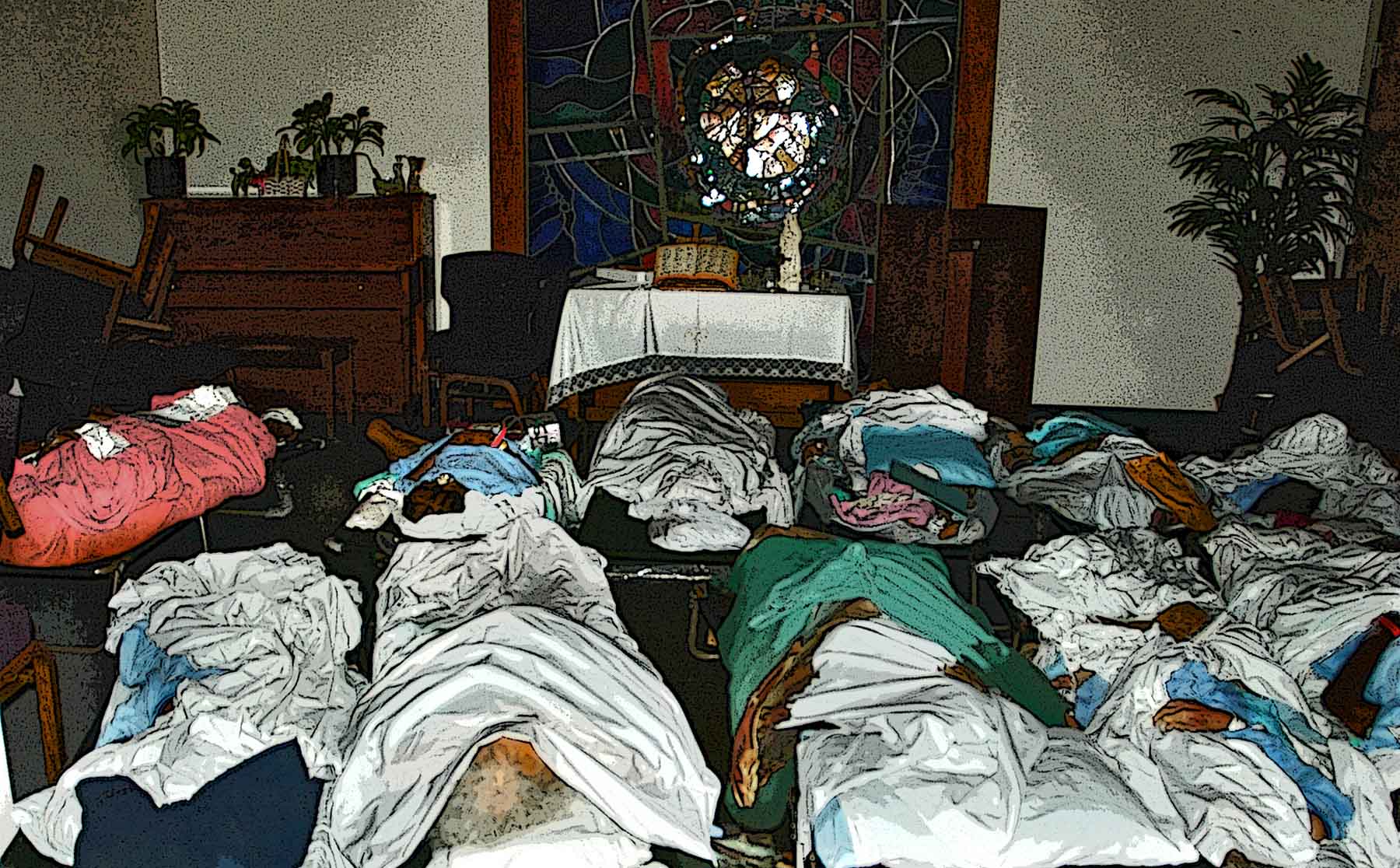


[…] The process of using data in journalism (Image source: https://www.gegrapha.com/the-art-of-religion-news-in-the-broadband-multimedia-social-age-2006-2009/) […]